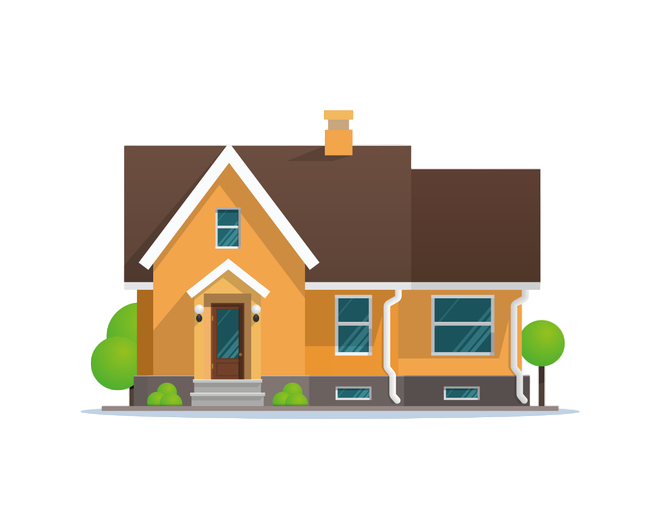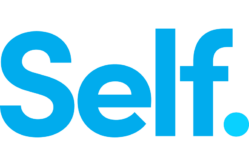When you bought your home, you may have been required to take out Private Mortgage Insurance (PMI) if you didn’t make a sizeable down payment. PMI is normally required when you borrow more than 80% of the property’s value, even if you have perfect credit. If you buy a house with less than a 20% down payment, you can expect your mortgage payment to include a monthly Private Mortgage Insurance premium.
The bad news is that this insurance does nothing for the buyer of the home, like homeowners insurance; instead, it is designed to protect the mortgage lender in the event you don’t pay for your loan. The good news is that PMI can be removed once you’ve paid your loan down to a certain balance, so you aren’t stuck paying the PMI premiums forever.
The following tips explain the costs of PMI and how you can more quickly eliminate that expense.
What Is PMI?
When you take out a traditional home loan, there’s a good chance your lender will require you to pay private mortgage insurance. PMI ensures that your lender is covered in case you default on your loan. If your home sells for less than the amount left on your mortgage in an instance of foreclosure, PMI kicks in to fill the gap.
If you can’t make a 20% downpayment, you’ll likely be slapped with the expense of PMI. Likewise, if you’re refinancing with less than 20% equity, you can expect to pay PMI with some lenders.
Until you have 20% equity, you’ll be required to make PMI payments. Once you reach that point, you can contact your lender about getting PMI removed from your payments, which could take months to verify and process.
PMI payments, on average, range between around .5% and 1% of the full amount of the loan. Depending on the cost of your home, that could be a fairly significant amount to add to your monthly premiums, equating to hundreds (or thousands) of dollars a year.
Now, as a result of the 2017 Tax Cuts and Jobs Act, private mortgage insurance is no longer tax-deductible.
All in all, PMI is an expensive product that offers few rewards to homebuyers.
How to Avoid PMI – Don’t Pay it if You Don’t Have to!
When you’re looking to buy a home, there are dozens and dozens of different fees you’re going to pay. One of the most notable is the PMI.
One of the most obvious ways to avoid the PMI is to put at least 20% down on your mortgage.
With just about any mortgage company, you won’t be required to get mortgage insurance if you put 20% down. It’s a lot of money to save up, but it can save you thousands and thousands of dollars throughout the course of your loan. You might also be able to avoid PMI if you refinance your mortgage.
Other types of loans, like one called an 80-10-10, might help you achieve the same goal, with less out-of-pocket. In a nutshell, the 80% is the main mortgage loan, while 10% is the buyer’s down payment, and the final 10% is a second loan. This second loan, which piggybacks the 80% loan, will complete the full value of the loan needed, but without traditional PMI payments.
Types of Loans That Don’t Require PMI
There are also several types of mortgages that allow you to eliminate fees and PMI. PMI is a pain for homeowners, but private lenders depend on it to protect themselves. That’s why many mortgage shoppers opt for the loan options below. Each of these loans is issued by an accepted private lender and backed by the federal government, eliminating the need for some of the fees associated with private loans.
The top options include:
- FHA Loans
- USDA Loans
- VA Loans

Check your VA Home Loan eligibility and get personalized rates. Answer a few questions and we'll connect you with a trusted VA lender to answer any questions you have about the VA loan program.
Some Lenders Don’t Require PMI
When comparing home loan options, be sure to look at all of the features and benefits offered by the lender. Some lenders waive the PMI requirement if you meet certain criteria. So when you are comparing loans, be sure to consider the all-in cost of the loan, including the interest rate, cost of points, origination fees, lending fees, cost of PMI, and other associated costs.
It’s only after comparing all costs and fees that you will know which lender offers the best loan for your situation.
The Cost of Private Mortgage Insurance
Your PMI premium will vary depending on the type of mortgage you have, and the length of time you took your loan out for. Private Mortgage Insurance usually ranges between ½ to 1% of the total loan amount, per year. On a $200,000 house where you put 10% down, your PMI premium will probably cost between $75 and $150 each month.
If you obtained your mortgage after 2006, your PMI premiums are tax-deductible expenses if your adjusted gross income is less than $109,000 for married couples or $54,500 for individuals. When you receive Form 1098 from your mortgage lender at tax time, you’ll see how much you paid in Private Mortgage Insurance premiums.
How to Stop Paying Private Mortgage Insurance
In most situations, lenders must cancel PMI when you pay your mortgage to 78% of the home’s value, and you are current on your monthly mortgage payments, according to The Homeowner’s Protection Act of 1998. Before this act was created, homeowners who didn’t know they could cancel PMI would continue to pay it to lenders who didn’t remove it for them.
You can also be proactive, and request a cancellation of your PMI premiums once your mortgage reaches 80% loan-to-value ratio; instead of waiting until it reaches the required 78% for automatic removal under the Homeowner’s Protection Act of 1998. You’ll need to be current on mortgage payments, not have a lien on the property or have a high-risk loan to be approved.
Additionally, if you’ve been paying your mortgage through the midpoint of your loan (15 years on a 30-year mortgage term, for example), PMI must be canceled even if you don’t meet the balance requirement of 78% of the home’s value. This is because, in some situations, the property value is decreasing as fast (or faster) as you’re paying off your mortgage.
If the value of your home has increased above your original purchase price, your loan-to-value ratio could decrease and help you meet the 80% or 78% rules that allow you to cancel your PMI. Keep an eye on the home’s value, so you know when you have the opportunity to cancel PMI.
Tip: Haven’t bought your house yet? An 80-10-10 mortgage is designed to avoid PMI from the outset. There are pros and cons to these mortgages, so be sure to read up on them before using this option.
How to Cancel PMI Faster
If the idea of paying an extra $75 to $150 a month in PMI premiums makes you sick, here’s what you can do to reach the 80% loan-to-value ratio quicker:
- Send extra mortgage payments each month to pay your loan down faster (making biweekly mortgage payments is a great way to do this).
- Complete home improvement projects which increase the value of your home and then have your home appraised to show the new value.
- Pay your mortgage on time, every time so you can cancel at 80% loan-to-value ratio rather than waiting to reach 78%.
- Don’t take out home equity loans or lines of credit as they reduce your property’s equity and cause you to pay PMI longer.
Remember, Private Mortgage Insurance doesn’t benefit you – it benefits the lender. So you want to get rid of it as quickly as possible. Eliminating PMI is a great way to free up some additional cash flow each month to help you reach other financial goals.
Another form of insurance we often are asked about is Mortgage Life Insurance, and whether or not it is something you should have. Check out our post on the pros and cons of Mortgage Life Insurance for your reference!
Bottom Line
Private mortgage insurance is difficult to avoid with a traditional loan and less than 20% down, but it isn’t impossible.
You should take the time to shop around for the best mortgage options out there. When you do, be sure to read the fine print so you’re aware of all the expenses you’ll be responsible for in addition to your monthly mortgage payments.



Comments:
About the comments on this site:
These responses are not provided or commissioned by the bank advertiser. Responses have not been reviewed, approved or otherwise endorsed by the bank advertiser. It is not the bank advertiser’s responsibility to ensure all posts and/or questions are answered.
Terry says
Wouldn’t getting your house reassessed if it has gone up in value possibly lead to higher taxes, which might outstrip any gains from eliminating PMI?
Ryan Guina says
It could. But most counties do their own periodic assessments. So there may not be a correlation.
Evan says
Hi,
I too have PMI with a 5 year minimum. Have you ever heard of a bank dropping it before the contracted minimum? If so – whats the best way to approach that?
Thanks.
Michael says
I think what was not clearly stated is what kind of home improvements will qualify for the appraisal. Bank, WF for example, absolutely does NOT care about home market value for the PMI removal purpose! Even if WF appraiser would appraise your home according to the favorable market condition (bringing home owner to better than 0.78 LTV), but at the same time home owner will fail to show structural ADDITIONs to your home with all the receipts, PMI will NOT be removed. Replacing roof, tile, etc that brings the value of the home up is NOT considered as home improvement by the WF! Home living space improvements is a very gray area that is defined only by your bank. What only black and white is additions to your home: pool, garage, fence etc…
Kelly says
I am at 77% LTV. Although I do have a rough payment history, we have paid extra and made last 3 payments on time. Mortgage company insists I do not qualify for auto removal due to prior late payments. Are they right?